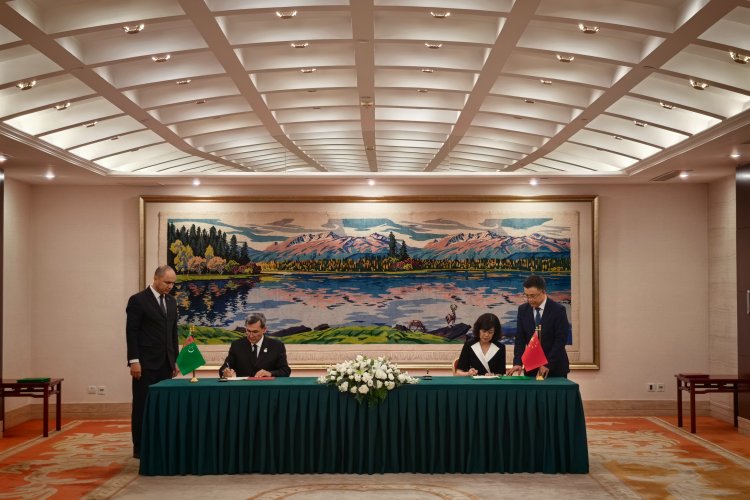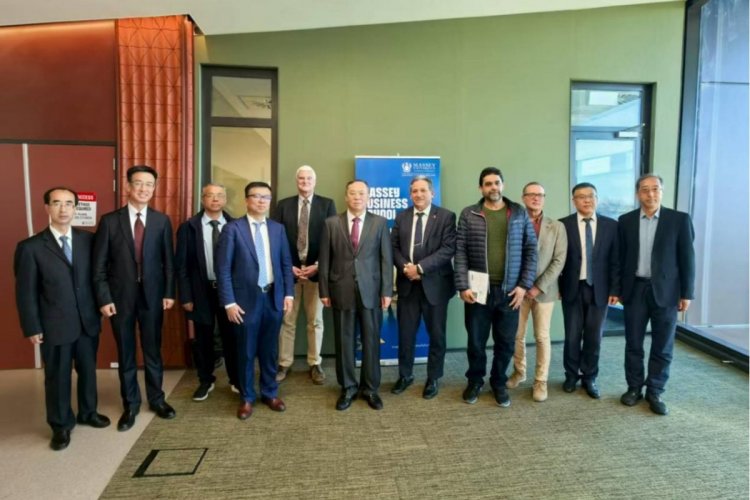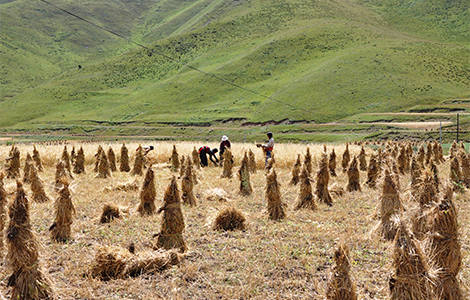
XINYI LIU
Barley harvest in Zhuoni County, Gannan Tibetan Autonomous Prefecture.
An archaeology dig on the “roof of the world” has yielded evidence that humans figured out much earlier than previously known how to survive year-round in farming and grazing settlements in extreme high-altitude regions of the Tibetan Plateau, finds research released Nov. 20 in the journal Science.
“The timing of when humans started to live and farm at such high altitude land is rather interesting,” said study co-author Xinyi Liu, PhD, an assistant professor of anthropology in Arts & Sciences at Washington University in St. Louis.
“It looks like that not only did these farmer-herders move to live in those extraordinary heights to raise livestock and gro crops like barley and millet, but also that human settlement into the higher, colder altitudes took place as the continental temperatures were becoming colder,” Liu said.
He is part of an international team of researchers from China, the United States and the United Kingdom that has been investigating the archaeological record in the northeast Tibetan Plateau.
The researchers relied on animal teeth, bones and plant remains uncovered at the site to pinpoint a date for what could be the earliest sustained human habitation at high altitude.
“Until now, the strategy of human adaptation in highland Tibetan Plateau was an open question,” Liu said. “Our study indicates this had happened 3,600 years ago in one part of the plateau. Studies conducted by other groups, such as led by Jade d’Alpoim Guedes from Washington State University, show that in the southeastern Tibetan Plateau, with the warmer conditions of more southerly latitudes, millet farmers reached high altitude during the third millennium B.C.
“We are still in the early stage to understand the diversity of human ecology in the plateau during the prehistory,” Liu said.
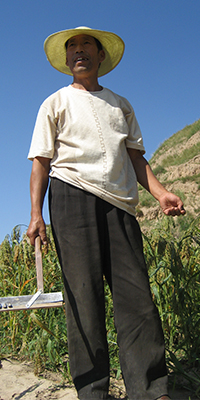
XINYI LIU
Broomcorn millet harvest in Lianhua County, Gansu.
Their findings demonstrate that across 53 archaeological sites spanning 800 miles once inhabited by the late Yangshao, Majiayao, Qiija, Xindian, Kayue and Nuomuhong cultures, there is evidence of sustained farming and human habitation between 8,200 and 11,154 feet above sea level.
Evidence of an intermittent human presence on the Tibetan Plateau has been dated to at least 20,000 years ago, with the first semi-permanent villages established only 5,200 years ago. The presence of crops and livestock at such altitudes indicates a more sustained human presence than is needed to merely hunt game at such heights.
Research on the Tibetan Plateau has raised interesting questions about the timing and introduction of Western staple crops such as barley and wheat — staples of the so-called “Fertile Crescent.”
From 4,000-3,600 years ago, this meeting of East and West led to the joining or displacement of traditional North Chinese crops of broomcorn and foxtail millet. The importation of Western cereals enabled human communities to adapt to the harsher conditions of higher altitudes in the plateau.
In this study, cereal grains (foxtail millet, broomcorn millet, barley and wheat) were identified at all 53 sites and animal bones and teeth (from sheep, cattle and pigs) were discovered at 10 sites.
Of the 53 sites, an earlier settlement group (dating from 5,200-3,600 years ago) reached a maximum elevation of 8,320 feet with millet cultivation, while a later group of 29 sites (dating from 3,600-2,300 years ago) approached 11,190 feet in altitude growing crops with Western Asian origins, such as barley and wheat.
The Tibetan Plateau research could have wider and further-reaching implications for today’s world in terms of global food security and the possibilities of rebalancing the global diet, Liu said, noting that modern agriculture is heavily, and perhaps unsustainably, swayed in favor of the big three crops of rice, wheat and maize.
“I hope more work will now be undertaken to look at the early use of indigenous high-altitude plant resources and the biological adaptation of humans to high altitude,” Liu said.
“The more international collaborations we have, the more we will learn about the rich ecology of past and present societies around the Tibetan Plateau. The wider range of plants and animals that humans raised in the world’s more challenging environments is informative to the way we may consider challenging issues in the present and in the future.”
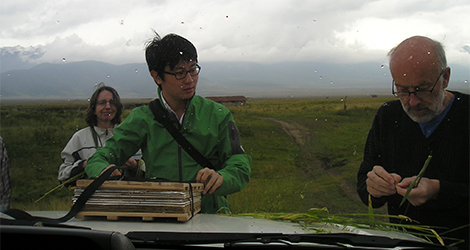
XINYI LIU
WUSTL archaeologist Xinyi Liu (center) and colleagues collect barley landraces at Menyuan Hui Autonomous County, Qinghai.
Other study co-authors include Fahu Chen, Guanghui Dong, Dongju Zhang, Xin Jia, Chengbang An, Minmin Ma and W. Xie of the Key Laboratory of Western China’s Environmental Systems (Ministry of Education), Lanzhou University, China; Martin Jones of the McDonald Institute of Archaeological Research, University of Cambridge, United Kingdom; Loukas Barton of the Center for Comparative Archaeology, Department of Anthropology, University of Pittsburgh, United States; Xiaoyan Ren of the Qinghai Provincial Institute of Cultural Relics and Archaeology, Xining, China; Zhaozhi Zhao of the Institute of Archaeology, Chinese Academy of Social Sciences, Beijing, China; and Xiaohong Wu of the School of Archaeology and Museology, Peking University, Beijing, China.
(News source: http://news.wustl.edu/news/Pages/27717.aspx)


